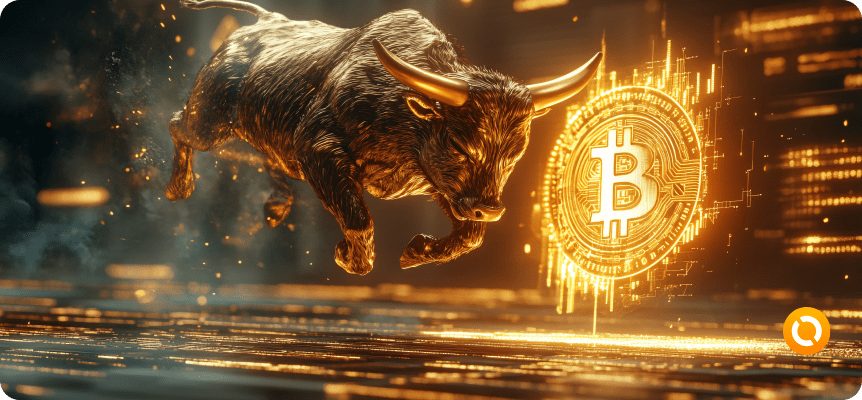But how does it all work? Where to start, what are the risks, and how to avoid wasting your money?
Let’s figure it out!
What is a token and why is it needed?
A simple way to explain: a token is a digital asset that exists within some existing blockchain network. It does not live “on its own” — unlike coins like Bitcoin or Ethereum, which have their own network, their own miners, their own ecosystem.
A token is like an application running on an operating system. You use the infrastructure of someone else’s network (for example, Ethereum, BNB Chain, TON), but you create your own value on it : a token that has a purpose.
There can be many appointments:
- internal currency of the service,
- access to restricted content,
- loyalty system,
- participation in voting (DAO),
- or just a way to raise money from the community.
Where does token creation begin?
Technically, anyone with basic knowledge can launch a token . But if you want the token to make sense, be useful, and not be ridiculed by the community, you need to prepare.
Step 1: Define the goal
Don’t start with code. First answer the question: why are you creating a token?
Everything from technical implementation to marketing will depend on this.
- Is this an access token?
- Currency for the ecosystem?
- Tokenized share?
- NFT project?
- Gamification mechanics?
Without a clear understanding, the token will remain a “dummy” that no one will want to buy.
Step 2: Select a blockchain
There is no point in inventing your own blockchain – it is expensive, complicated and only needed for large projects. In 99% of cases, choose one of the ready-made blockchains:
- Ethereum is the industry standard, many compatible wallets and services, high security, but higher fees.
- BNB Smart Chain – cheaper and faster, great for first steps.
- Solana, Polygon, TON are suitable if speed is important or you are targeting a specific audience.
The choice depends on where your audience is, what functionality you need, and how you plan to scale.
Step 3: Write a smart contract
This is the heart of your token. If you are not a developer, hire a specialist or use ready-made templates. But even in this case, it is important to understand what exactly your smart contract does : who can issue tokens, whether they can be frozen, whether the emission will be fixed or variable, etc.
Don’t forget: a smart contract can’t be “reflashed” like a website. Mistakes will cost dearly.
Step 4: Conduct an audit
This is a must-have. Smart contract audit is done either by an internal team or a third-party company. Without an audit, you risk not only security, but also reputation. No normal platform lists tokens without checking the code.
Step 5: Prepare the tokenomics
Tokenomics is not just “I’ll issue 1,000,000 of them.” It’s a thoughtful model:
- How many tokens do you give to the team?
- How much does it cost to the community?
- What % will be sold to investors?
- Are there any vestings?
- How is the value of a token created?
If the token is not needed in real use, no one will hold it.
Step 6: Create wallets, website and token access
We need a website where users can learn about the project. We need a wallet (or integration with Metamask) through which to buy or receive a token. We need transparency: where is the contract, how much is in circulation, what rights do the owners have?
And, of course, don’t forget about the whitepaper — this is the “passport” of your token. It should be understandable even for those who are just entering crypto.
Step 7: Marketing and Launch
It is not enough to simply launch a token. You need to make it known. Use Telegram, X (Twitter), crypto bloggers, listings on trackers (CoinMarketCap, CoinGecko), airdrops, collaborations.
But be honest. If the token has no value, no marketing will save it. People can smell a fake a mile away.
How much does it cost to create a token?
Prices vary widely:
- A simple token based on a template is $100–300.
- A complex system with lawyers, tokenomics and auditing – from $5,000 and up.
- Listing on CEX is a separate story: it costs tens of thousands of dollars, and not every token is accepted there.
Examples: How Successful Tokens Started Small
Creating a token is not just about code, but about an idea that can be turned into a product. Here are a few examples that started out simple and grew into full-fledged projects with millions of users:
✅ Uniswap (UNI)
Uniswap started out as a simple decentralized exchange on Ethereum. Initially, developer Hayden Adams was just experimenting with the idea of an automated market maker (AMM). Then the need for an internal token arose, and that’s how UNI was born , with governance functions. Today, Uniswap is one of the largest DEXs in the world, and the token is traded on dozens of exchanges.
✅ Chainlink (LINK)
At first, Chainlink was a solution to a problem: how to transfer external data to smart contracts. It seemed like a narrow task. But the team competently implemented the idea of oracles, released the LINK token , and now it is a de facto standard in DeFi infrastructure.
✅ PancakeSwap (CAKE)
It started as a copy of Uniswap on Binance Smart Chain — but thanks to meme culture, an active community, and low fees, it quickly became popular. The CAKE token is used for staking, farming, and voting — and has become one of the reasons for the success of the entire BNB Chain ecosystem.
✅ Stepn (GMT)
The project started as a “walking game”: you get tokens for moving. At first, the community was small, and the GMT token was used as an internal currency. Thanks to good UX, engagement, and Web3 hype, the project grew to millions of users and brought its creators tens of millions of dollars in investments.
👉 The main thing: they all started not with a token, but with an idea . The token became a tool, not an end in itself.
Conclusion: Creating a token is easy, but creating value is difficult
From a technical point of view, you can make a token in an evening today. There are a lot of templates, automated generators, even AI tools on the Internet.
But simply “issuing a token” is not a result.
The result is when the token:
- understandable and needed by your community;
- has a clear logic of issue and use;
- integrated into the product or service , not just hanging out in MetaMask;
- inspires confidence – at least due to transparency, auditing and an adequate team.
This is where most projects fail. They make a token as if it were a “spare” token, with no meaning, no strategy, and no understanding of why anyone should hold it . This means it has no future, no matter how much money you put into launching or advertising.
Creating a token is part of the journey. The real impact comes after launch , when you build trust, a product, and a community. And if you do it right, the token becomes not just “another coin on the market,” but part of an ecosystem that actually works .











